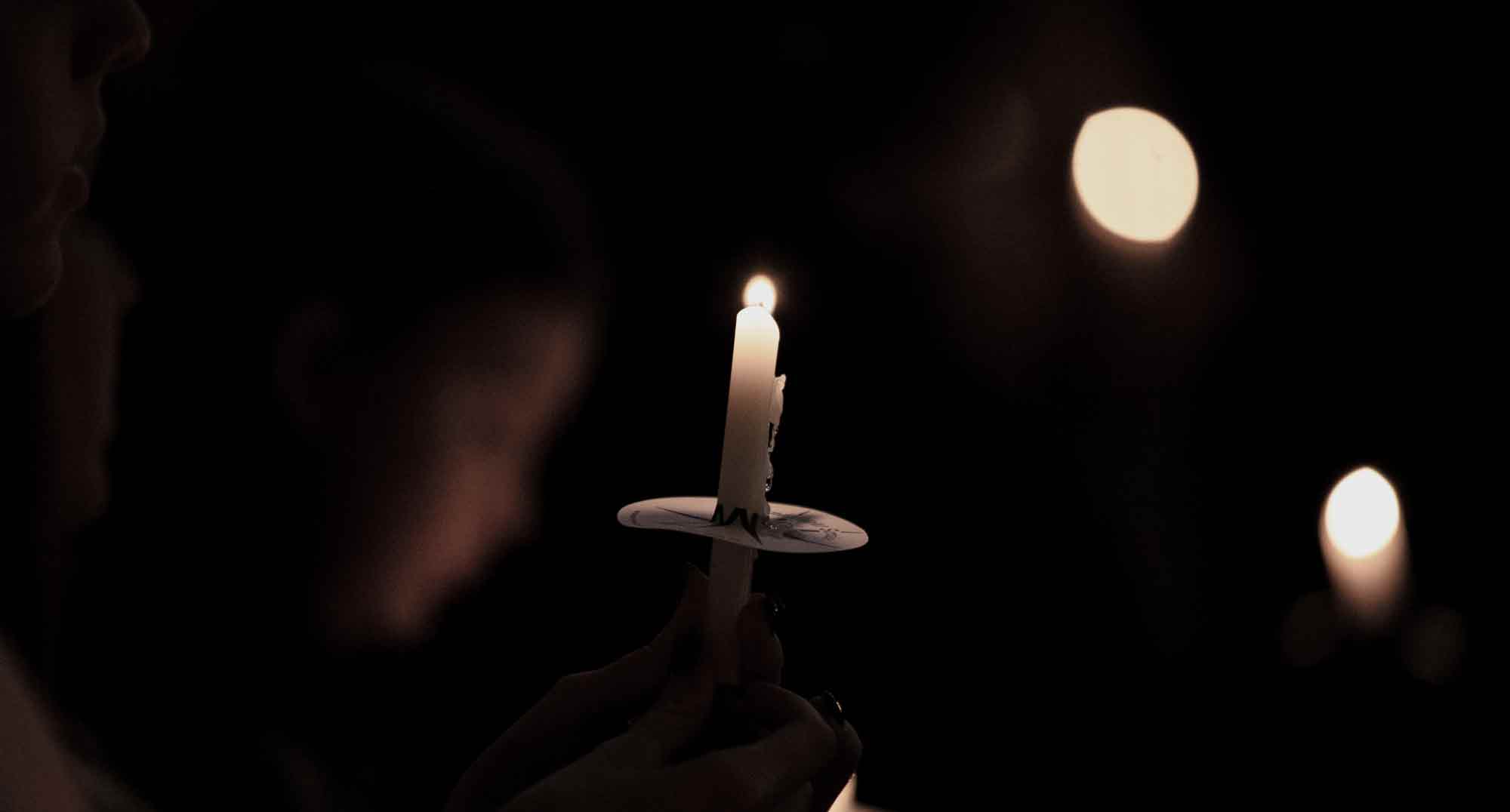KATHLEEN CHAPELL|GUEST
Silent Night is my very favorite Christmas hymn. It speaks to believers AND non-believers around the world. Those who know just who that infant in the manger was hear in this simple song the provision of a Redeemer by a loving Father. And those who don’t know Him as Savior still love this tender song that is steeped in tradition and sentiment.
On Radiant Beams
Growing up in a tiny church in southern Illinois, I had two different impressions of the carol. The first, I must admit, was based purely on the sentiment and sweetness of watching the adults in that church sing it. The church was founded in 1881 by German immigrants, and when I was young, most of the 25 members of Woodburn Presbyterian Church were either first-or second-generation German Americans. So, when we sang this song, there were many who sang it in their heart language: “Stille Nacht, heilige Nacht, Alles schlaft; einsam wacht….” As they sang, with all the memories of family and heritage, these dear saints would sometimes close their eyes and weep as they sang. Even as a little child, I knew that this song meant something important to them—and therefore to me.
My second understanding—or, as it turns out, misunderstanding—was a result of my childish perception of part of the text. My dad built our house from the ground up, so my early life involved lots of hammers and nails and sawdust and beams—there was the long “I-beam” that ran the length of the basement below me, and the rafters and beams of the roof rising above me. As I would lie in bed at night and look around, there were so many “beams” surrounding me.
So, as I sang Silent Night during the Christmas season, in my little mind, the verse that reads: “Silent Night, Holy Night (that part I got—it was quiet and it was holy), Son of God, Love’s pure light, radiant beams from Thy Holy face….”—this was about BEAMS! He was in a stable in the manger, and around His manger were BEAMS—just like at my house! The radiant part didn’t really make sense yet, but then we quickly went on to “With the dawn of redeeming Grace, Jesus, Lord, at Thy birth.” That’s the part that began, over the years, to sink into my heart, as I grew to understand more and more what that song meant, and why my Savior came.
The History of Silent Night
I also learned more of the origin of this beloved song (and here I will quote parts of the excellent article in Robert G. Morgan’s Then Sings My Soul:
“It was Christmas Eve in the Austrian Alps. As Father Joseph Mohr prepared for the midnight service, he was distressed to learn that church organ was broken, ruining prospects for that evening’s carefully planned music. But Father Joseph was about to learn that the Lord causes all things to work together for good to those who love Him. Hastily, he wrote the words, “Silent Night, Holy Night, all is calm, all is bright….” Taking the text to his organist, he explained the situation and asked Franz Gruber to compose a simple tune for the text. That night, December 24, 1818, “Silent Night” was sung for the first time as a duet, accompanied only by a guitar.”[1]
The carol quickly spread through first Europe, and then all over the world.
This simple carol has yet another sweet and moving history of the Lord’s working in human hearts through the ages. Known as “the Christmas Eve Miracle,” or “the Christmas Truce of World War 1,” it was a bitterly cold Christmas Eve night in 1914 in a part of Belgium called Bois de Ploegsteert. As British soldiers huddled in their dark, muddy trenches, trying desperately to stay warm, they began to hear sounds of singing from across the battlefield. Singing? Imagine! And what was the song? “Stille Nacht,” rising from the German trenches, and then soon swelling in volume as voices from the Allied trenches joined in English.
Gradually, cautiously, soldiers from both sides of this bitter conflict began to emerge from their trenches, warily approaching one another. They began to shake hands, and then to exchange greetings, and cigarettes and food, and pictures of loved ones at home. Some began to play soccer and dance. Enemies became, for that wondrous night, friends. Hearts were joined together as the song’s words soared with new and needed reality above the dark field, “Heavenly hosts sing Alleluia! Christ the Savior is born!”
The Christmas Eve truce, of course, didn’t last; the night ended, and the soldiers returned to their trenches. The next day, they returned to the cruel war— “The War to End All Wars,” as it was then known. Yet, the story of that night—that amazing night that was not silent, and yet was somehow holy—that story lived on.
Now it lives on in our hearts, too. The carol binds us together, but not merely in sentiment. The Lord of the song binds us together as we remember and celebrate all He has done in the birth, life, death, and resurrection of His Son. We know that the promise of Christmas is made complete by the miracle of Easter. As we prepare our hearts in this Advent season, let us, indeed, “…With the angels, let us sing Alleluia! to our King! Christ the Savior is born! Christ the Savior is born!”
[1] From Then Sings My Soul, p.93, Robert J. Morgan, Thomas Nelson Publishers, 2003

Kathleen Chapell
Kathleen Chapell is an accomplished musician with degrees in Music Education and Music Performance, as well as over 40 years of experience in school music, church music and choral conducting. In her experiences as pastor’s wife, seminary president’s wife, and now wife of the Stated Clerk of the PCA, Mrs. Chapell has spoken at numerous women’s conferences and retreats, including national and international gatherings of The Gospel Coalition, Unlimited Grace Media, and the Presbyterian Church in America. Kathy’s most cherished roles, however, are wife, mother of four, grandmother of six, and daughter of the King of Heaven.

